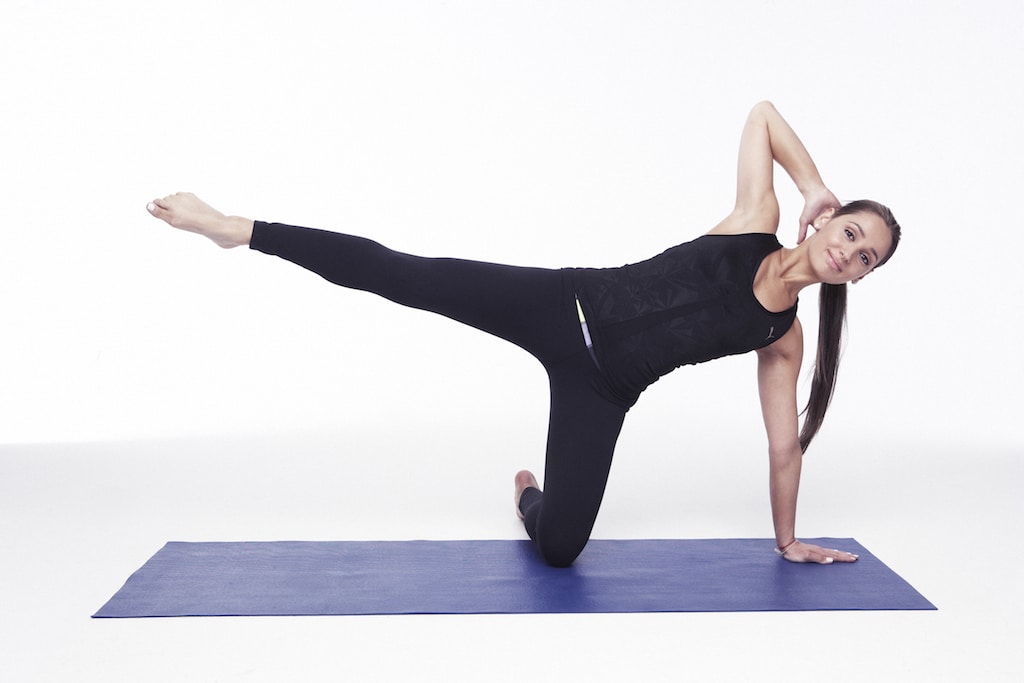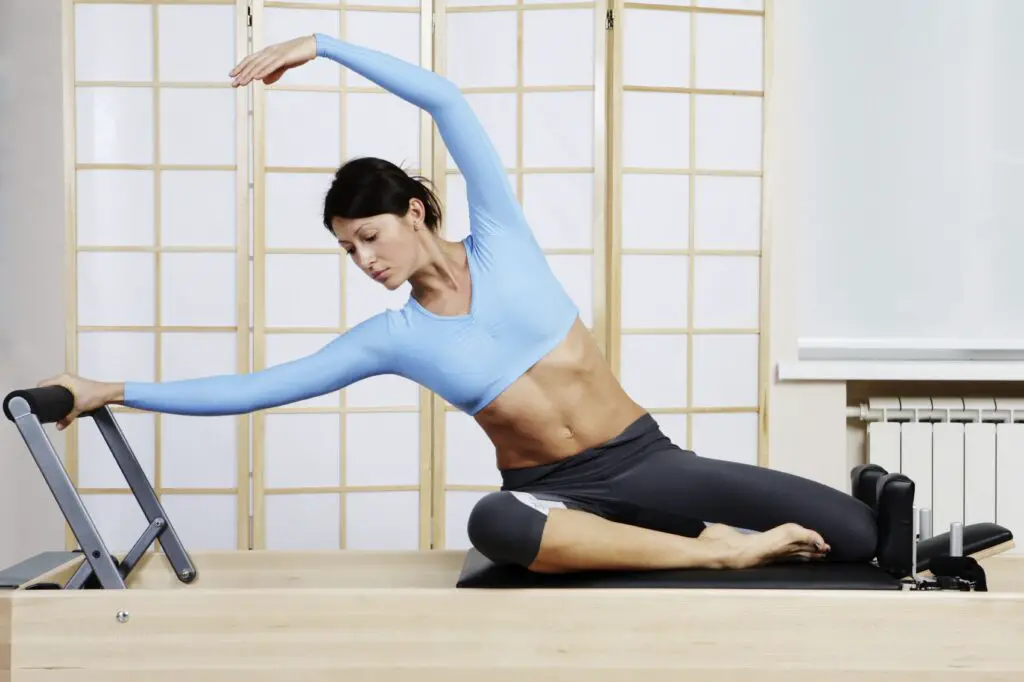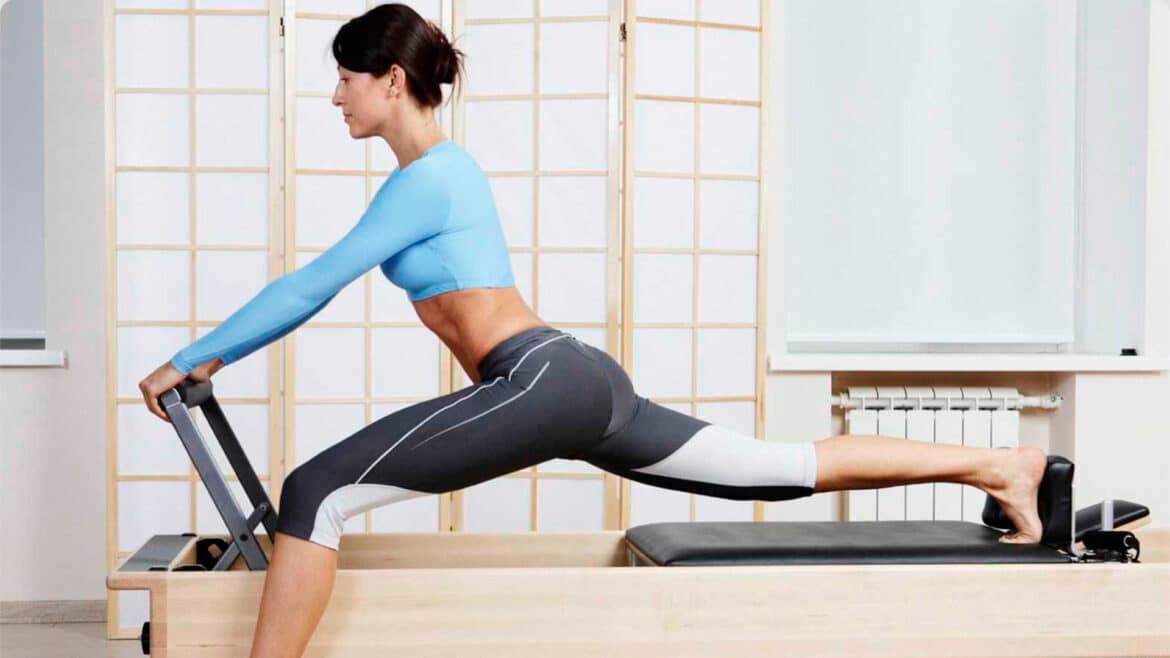Introduction
What Is Jumpboard Pilates: Jumpboard Pilates is an invigorating and dynamic fitness practice that blends the principles of traditional Pilates with the cardiovascular benefits of rebounding. By incorporating a specialized apparatus known as a jumpboard, Jumpboard Pilates transforms the traditional mat or reformer Pilates routine into a high-intensity, low-impact workout that engages the entire body. Whether you’re a Pilates enthusiast looking to amp up your routine or a fitness enthusiast seeking a fun and effective way to improve strength, flexibility, and cardiovascular endurance, Jumpboard Pilates offers a unique and exhilarating approach to achieving your fitness goals.
One of the key attractions of Jumpboard Pilates ball is its ability to deliver a high-intensity workout with minimal impact on the joints. The cushioning effect of the spring-loaded board reduces the stress on the body, making it an ideal choice for individuals with joint issues, as well as those looking for a challenging workout without the risk of injury. This low-impact aspect also makes Jumpboard Pilates suitable for people of all fitness levels, from beginners to seasoned athletes.
Jumpboard Pilates offers a multitude of benefits. It engages the core muscles extensively, helping to improve stability, posture, and overall strength. The dynamic nature of the exercises also elevates the heart rate, making it an effective cardiovascular workout that can aid in burning calories and increasing endurance. Additionally, the rhythmic bouncing and controlled movements can enhance coordination, balance, and flexibility.

What is Pilates jump board class?
Cardio Jumpboard class is performed at a much faster rate than regular Pilates class. Essentially, it feels like you are skipping while lying down. As the movements are faster, you need better coordination to manage all the various movements.
The Reformer: The foundation of a Pilates Jump Board class is the reformer, a versatile piece of equipment designed for Pilates exercises. The jump board is attached to the end of the reformer, providing a stable surface for participants.
Jump Board: The jump board itself is a padded platform equipped with springs that create resistance. It serves as both a platform for various exercises and a surface for rebounding, offering a unique cardio component to the workout.
Dynamic Movements: Pilates Jump Board classes involve a series of dynamic exercises that incorporate jumping and rebounding off the board. These movements engage multiple muscle groups and elevate the heart rate.
Controlled Breathing: As with traditional Pilates, controlled breathing is integral to the practice. Participants are guided to synchronize their breath with their movements, promoting better oxygenation and body awareness.
How many calories do you burn in Pilates Jumpboard?
You can burn up to. 321 calories or more (depending on the intensity of. your workout) during 60 minutes of exercise. 🙂 #Pilates #OnelifePilates #OnelifeGreenhills.
Intensity: The intensity of your Pilates Jumpboard workout plays a significant role in calorie expenditure. More vigorous and challenging movements will burn more calories than gentler exercises.
Duration: The length of your session matters. Longer classes naturally allow for a greater calorie burn.
Body Weight: Heavier individuals tend to burn more calories during exercise because it requires more energy to move a larger body mass.
Fitness Level: Your fitness level and familiarity with Pilates Jumpboard exercises can affect calorie burn. As you become more proficient, you may perform movements more efficiently, potentially increasing calorie burn.
Instructor Guidance: The guidance and motivation provided by your instructor can influence your effort level, affecting calorie burn.
What are the benefits of Pilates jump board?
As your heart rate increases as you jump, you’ll learn to breathe through the movement creating efficiency within muscle endurance and correct core activation. There are many other benefits such as core stability, leg strength and overall a fun way to move!
Core Strength: Pilates Jumpboard strengthens the core muscles, improving posture and stability.
Cardiovascular Fitness: The rebounding element elevates heart rate, enhancing cardiovascular endurance.
Low Impact: It’s gentle on the joints, making it accessible to individuals with joint concerns.
Flexibility and Coordination: The dynamic movements enhance flexibility and coordination.
Mind-Body Connection: Pilates promotes mindfulness and body awareness, helping you connect with your body on a deeper level.
Pilates Jumpboard varies from person to person, it offers a comprehensive and efficient workout that extends beyond just calorie expenditure. Whether you’re seeking to shed calories, improve core strength, or enhance overall fitness.
Pilates Jumpboard provides an engaging and effective path to achieving your goals. As with any exercise routine, consistency and commitment are key to reaping the full benefits of this invigorating fitness practice.
What is the best way to do Pilates at home?
Leveling up your Pilates workouts can be done at home with equipment such as dumbbells, ankle weights, and resistance bands. Once you have this equipment in your possession, look for online Pilates classes that use them and have more advanced classes. Level up your Pilates classes with lululemon Studio.
Maintain Proper Form:
- Focus on maintaining proper alignment and form during each exercise.
- Pay attention to cues related to posture, breathing, and muscle engagement.
- Start with basic exercises and progress gradually to more advanced movements.
Establish a Routine:
- Consistency is key to reaping the benefits of Pilates.
- Set aside a specific time each day or week for your Pilates practice.
- Create a balanced routine that targets different muscle groups.
Incorporate Breathing Techniques:
- Pilates emphasizes controlled and mindful breathing.
- Practice diaphragmatic breathing, which involves inhaling deeply through the nose and exhaling fully through the mouth.
Listen to Your Body:
- Pay attention to how your body responds to each exercise.
- Modify or skip movements that cause discomfort or pain.
- Gradually progress as your strength and flexibility improve.
Why is Pilates class so expensive?
The Pilates instructors have spent considerable amount of time, effort and money in order to get themselves trained as instructors. This also means that Pilates instructors have a strong foundation in anatomy and movements as compared to many other fitness instructors.
Specialized Instruction:
- Pilates is a specialized form of exercise that requires trained and certified instructors.
- Instructors undergo rigorous training and certification programs, which can be costly and time-consuming.
- Their expertise in guiding clients through precise movements and ensuring proper form is a key component of the value provided in Pilates classes.
Small Class Sizes:
- Pilates classes are typically small to ensure individualized attention and correction of form.
- Smaller class sizes mean that the instructor can focus on each participant’s needs and tailor exercises accordingly.
- This personalized approach enhances the quality of instruction but can result in higher per-person costs.
Specialized Equipment:
- Many Pilates classes are conducted on specialized equipment like reformers, Cadillac machines, and Wunda chairs.
- These pieces of equipment are not only expensive to purchase and maintain but also require space and regular servicing.
- The use of equipment adds a unique dimension to Pilates training, but it contributes to the overall cost.
Studio Overheads:
- Running a Pilates studio involves various expenses, including rent, utilities, insurance, and equipment maintenance.
- These overhead costs are factored into the price of classes.
Is Pilates same as gym?
Pilates vs Gym
The main difference between Pilates and strength or weight training in the gym is that Pilates exercises focus on your stability system, the mechanics of your movements, building your postural awareness and mobility.
Pilates:
- Pilates exercises are typically low-impact and focus on controlled, precise movements.
- It often involves specialized equipment like reformers, Cadillac machines, and Wunda chairs, in addition to mat-based exercises.
- Pilates emphasizes quality of movement, breath control, and alignment.
Gym Workouts:
- Gym workouts can include a wide variety of exercises, such as weight lifting, running, cycling, swimming, and group fitness classes.
- The range of activities allows for flexibility in targeting specific muscle groups and achieving various fitness goals.
- Gym workouts can be high- or low-impact, depending on the chosen activities.
Pilates:
- Core engagement is central to Pilates, and exercises are designed to strengthen the muscles of the abdomen, lower back, and pelvic floor.
- Pilates promotes a strong mind-body connection and focuses on building a stable core to support the spine and improve posture.
Gym Workouts:
- While many gym exercises engage the core, the emphasis may vary depending on the workout.
- Gym-goers often target specific muscle groups, such as chest, biceps, or quadriceps, based on their fitness goals.
Why Pilates is better than gym?
Additionally, Pilates emphasizes proper alignment and posture, improving overall body function and reducing the risk of injury. Gym workouts may emphasize lifting heavy weights and achieving as many reps as possible, which can increase the risk of injury if proper form is not maintained.
Core Strength: Jump board exercises require significant core engagement to maintain stability during dynamic movements, leading to enhanced core strength and stability.
Cardiovascular Fitness: The rebounding element elevates the heart rate, making Pilates Jump Board classes an effective low-impact cardiovascular workout.
Improved Flexibility: These classes incorporate stretching and lengthening movements that contribute to improved flexibility and joint mobility.
Low-Impact: The cushioning effect of the jump board reduces the impact on joints, making it suitable for individuals with joint concerns.
Enhanced Coordination: The dynamic and rhythmic nature of the exercises enhances coordination and body awareness.
What is better than Pilates?
Weight training is an undisputed winner here. With Pilates, you typically build lean and strong muscles, but it is not an appropriate form of exercise for gaining bulky arms or legs. As weight training involves lifting heavy weights at low or high intensity, you can gain muscular and bulkier body form.
Why It Might Be Better:
- HIIT workouts are known for their time efficiency, as they can provide an intense workout in a shorter period.
- HIIT can be more effective for calorie burning and fat loss compared to Pilates.
- It offers a variety of exercises that can include both cardiovascular and strength components.
Why It Might Be Better:
- Yoga focuses on flexibility, balance, and mindfulness.
- It promotes relaxation, stress reduction, and improved mental well-being.
- Yoga offers a holistic approach to fitness that incorporates physical, mental, and spiritual aspects.
Why It Might Be Better:
- Strength training can be more effective for building muscle mass and increasing metabolic rate.
- It provides a clear progression path for individuals looking to lift heavier weights and achieve specific strength goals.
- Strength training can be adapted to various fitness levels and offers a wide range of exercise options.
Why They Might Be Better:
- Activities like running, swimming, cycling, or dancing can provide excellent cardiovascular fitness benefits.
- They can be enjoyable, especially for individuals who prefer dynamic and high-energy workouts.
- Cardiovascular activities can help with weight management and overall endurance.

Conclusion
One of the standout aspects of Jumpboard Pilates is its adaptability. Whether you’re seeking rehabilitation from an injury, aiming to enhance your athletic performance, or simply looking to stay fit and agile, Jumpboard Pilates can be tailored to meet your specific needs. Instructors can modify exercises to accommodate different skill levels, ensuring that participants receive a workout that is both challenging and safe.
The engaging and enjoyable nature of Jumpboard Pilates fosters a sense of motivation and consistency. Participants often find themselves looking forward to their sessions, which can be a crucial factor in maintaining a long-term fitness routine. The sense of accomplishment that comes with mastering new movements and seeing tangible progress can be highly motivating.
In a world where fitness options abound, Jumpboard Pilates stands out as a holistic and sustainable approach to well-rounded health. Its ability to simultaneously improve strength, flexibility, and cardiovascular fitness while minimizing the risk of injury makes it a valuable choice for individuals of all ages and backgrounds. So, whether you’re looking for a new fitness challenge or a way to enhance your overall well-being, Jumpboard Pilates offers an exciting and effective path to achieving your goals.

